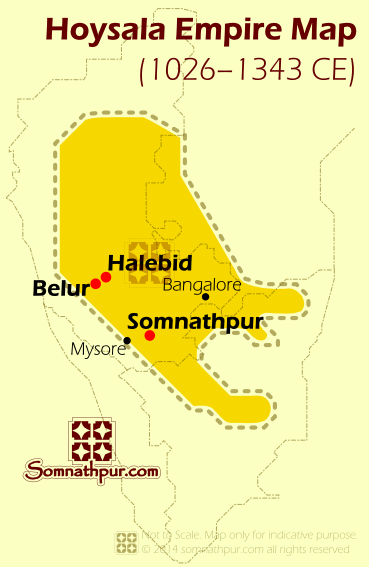Galaganatha Temple
Galaganatha Temple dedicated to lord Shiva is a compact yet strikingly unique temple in Pattadakal. The most striking part of the Galaganatha Temple is its dexterously executed tower and the fluted final atop.
Most likely the Galaganatha Temple was built around 750 CE during the regime of the early Chalukya king Vikramaditya II.
G
alaganatha Temple dedicated to lord Shiva is a compact yet strikingly unique temple in Pattadakal. The most unique part of the Galaganatha Temple is its dexterously executed tower and the fluted final atop.Most likely the Galaganatha Temple was built around 750 CE during the regime of the early Chalukya king Vikramaditya II.
The original temple had the typical features of a Hindu temple. That is the sanctum (garbhagriha) housing the icon of the god, a vestibule (antarala), a circumambulatory path (pradakshinapatha) around the sanctum and the vestibule , the open hall and the entrance porches to the hall.
However many of these features are non existing or probably never completed. What you can see now of the Galaganatha Temple are the sanctum, the tower above it, the partially dilapidated circumambulatory path, all of it stands above the fluted basement of the plan. Of course you can see the large Linga made of hard granite inside the shrine.
[#4058] The temple is built on a plinth (about 40fX30ft/ 12mX9m) with three tiers of ornate base mouldings.At intervals on the base are the boxlike chaitya arches (kudus) with images. Like mentioned earlier most of the perephral structures of the temple is non existing. So the door to the sanctorum is directly accessible from outside. Over the lintel of the door is beautifully carved image of dancing Shiva along with musicians. On either sides of the doorjambs are the images river goddesses Ganga and Jamuna along with their mounts.
Now going around the temple, you will reach a pavilion along the south side wall of the temple. In fact there where two more such pavilions on the north and west sides, but are missing. These pavilions are called devakoshta pavilions. The south pavilion contain a giant bas-relief image of Shiva slaying the demon called Andhakasura (the blind demon). In fact this is a very popular mythical theme that adorns may ancient temples dedicated to lord Shiva. Essentially it portrays the victory of the good over the evil.
On either sides of this panel are perforated windows.
The well preserved part of the Galaganatha Temple is its architecturally thrilling spire (tower). This has a striking similarity with the temples at Alampur in Andhra Pradesh. For all that matter it could be executed by the same architect.
On either sides of this panel are perforated windows.
The well preserved part of the Galaganatha Temple is its architecturally thrilling spire (tower). This has a striking similarity with the temples at Alampur in Andhra Pradesh. For all that matter it could be executed by the same architect.

Hoysala Empire during 12th Century CE. Belur was the original capital, later moved to Halebid.
The political future of the upcoming Hoysalas was greatly influenced by the two larger neighboring powers – the Chalukyas of Kalyani and the Cholas of Thanjavur.
During the 11th and 12th centuries power in the southern peninsula were focused on these two kingdoms. If you draw a diagonal line on the south India’s map connecting Vijayawada in Andhrapradesh to Mangalore in Karnataka, you can get a very approximate border between these two empires.
Train connections for Badami, Aihole and Pattadakal
Badami , located about 22 km (14 miles) southwest of Pattadakal is the nearest railway station for Pattadakal. Badami (Station Code:BDM ) itself is on the less busy Solapur-Gadag route. This means, there are not many long distance trains connect Badami directly with other metro cities in the region. However there are a few convenient express and local train connections for Badami.
Chalukya Dynasty
The history of Chalukyas is a bit complicated with controversies and ambiguities ; and often riddled with myths and legends. Complicated, because there were many dynasties ( to be specific three ) shared the name Chalukya. Before going further into this, let's first see where was this Chalukya Empire, as it is often referred, existed in India. Those of you with an understanding of the India's geography , imagine the Indian heartland bordered by two rivers - Narmada in the north and Kaveri in the south. Well, what lies between these two rivers was practically the span of Chalukyan Empire at its peak.
